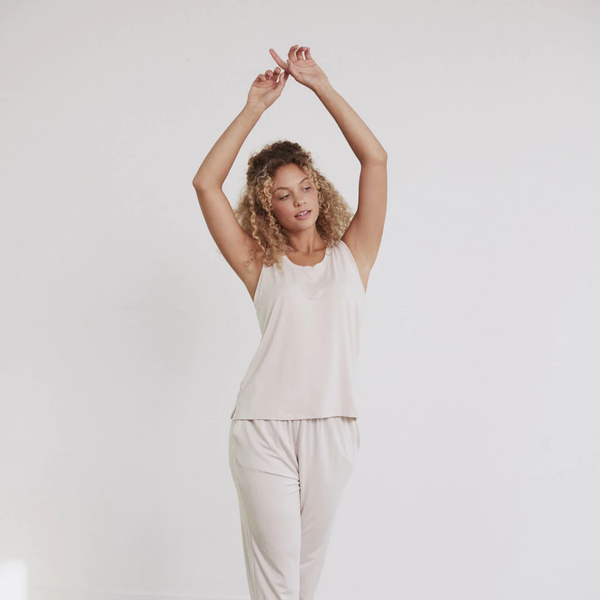
If incredible softness is a top priority when you’re shopping for clothing, you most likely own a lot of modal. Technically a type of rayon (a.k.a. viscose), modal fabric is known for its silky feel. It’s often marketed as a more natural and sustainable alternative to synthetic fabrics like polyester, and a more durable and non-pilling alternative to cotton. It’s more absorbent and quick-drying than cotton, which has made it a darling of the activewear industry and a common material in underwear and sheets. It also has a good amount of stretch, drapes well, and stays fairly cool to the touch even in humid weather. Compared to other rayon fabrics, modal is stronger and holds its shape better. It’s also safer to wear against your skin than acrylic, polyester, spandex, or nylon because it doesn’t contain any synthetic petroleum-based materials, so it won’t shed microplastics when you wear it or wash it.
But what is it made from, exactly?
The short answer is wood pulp, which makes me imagine a softer, fancier version of mushed-together homemade paper. In reality, it’s more complicated than that, and the production process requires some very sophisticated machinery. Cellulose is extracted from wood pulp, most commonly from beech trees, and then forced through tiny holes in a device called a spinneret (also the name for the silk-spinning organ on a spider or silkworm) to create fibers. The fibers are chemically stabilized to make them solid enough to be spun into yarn, and then the yarn is woven or knitted into yards of fabric. As with other fabrics, modal’s texture depends on factors like thread count and how tightly it is woven. A variation called micromodal has a lighter, silkier texture than regular modal because it’s woven very tightly with more threads.
As for whether or not modal fabric is sustainable, that’s complicated too. Preethi Gopinath, associate professor of textiles and founding director of the M.F.A. Textiles program at Parsons School of Design and School of Fashion, warns that “sustainability often gets misconstrued as anything that is biodegradable,” emphasizing that how something breaks down is not the only aspect of sustainability. Modal is widely considered more sustainable than cotton because cotton requires huge amounts of water, pesticides, and labor to cultivate, and beech trees grow quickly, require less water, and help absorb CO2 from the atmosphere. But some modal is made from eucalyptus trees, which grow even faster than beech trees but also require more water, so they aren’t necessarily a more environmentally friendly choice.
You also have to consider the methods used in the manufacturing process. Gopinath says modal is an improvement on traditional rayon/viscose, which requires more harmful chemicals to produce and emits more of them into nearby water and air. But since most manufacturers of modal use proprietary solvents, the ingredients of which are not made public, it’s next to impossible to know how toxic modal’s production may or may not be. (If you’re interested in reading more about this topic, the website Good on You is an excellent resource that rates clothing brands based on price and sustainability.)
What we do know is that the most sustainable examples of modal are sourced from renewable forests and made in facilities with the highest chemical-processing standards. One of those facilities is the Austrian Lenzing AG, which has developed innovative processes for minimizing emissions and conserving resources. It also sources cellulose from sustainably managed beech-tree plantations. To make sure a brand is getting its modal from Lenzing AG, look for the words Lenzing modal in the fabric content listed on the tag.
Some products made of modal that we’ve written about
The Strategist is designed to surface the most useful, expert recommendations for things to buy across the vast e-commerce landscape. Some of our latest conquests include the best acne treatments, rolling luggage, pillows for side sleepers, natural anxiety remedies, and bath towels. We update links when possible, but note that deals can expire and all prices are subject to change.










